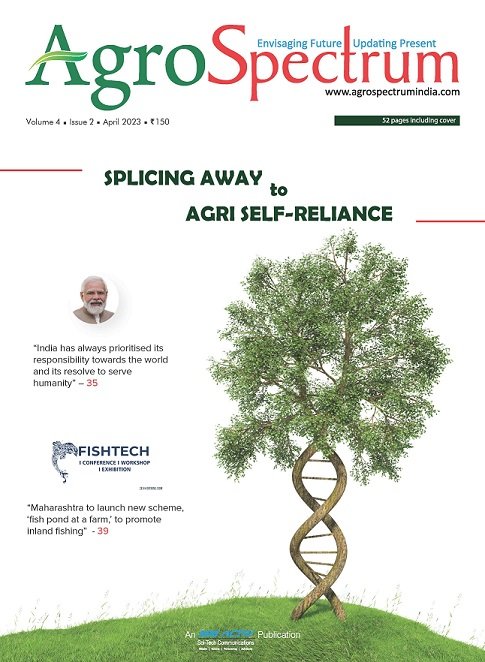Saturday, 22 November 2025

The application of molecular biology and genomics to farming, known as agrigenomics, has the potential to significantly transform India’s agrarian landscape. It has the potential to revolutionise agriculture by enhancing yield, expanding food variety, improving nutrition, creating disease and pest resilience, reducing food waste, and promoting sustainable farming practices. The ‘Genome-Editing’ technology is currently under scrutiny as AgroSpectrum examines its impact on the agriculture industry in general, with a particular focus on the future of India’s agriculture sector.
The application of molecular biology and genomics to farming, known as agrigenomics, has the potential to significantly transform India’s agrarian landscape. India is one of the world’s largest consumers of food, with a population of over 1.3 billion, and the agricultural industry employs over half of the country’s workforce. However, Indian farmers face various challenges, including pests, diseases, unpredictable weather fronts and the need to increase yields to feed a growing population. Agrigenomics offers potential solutions to these problems, but its implementation has been slow in India.
CRISPR/Cas9, also known as the ‘genetic scissors’, was recently discovered by Emmanuelle Charpentier and Jennifer Doudna, who were awarded the Nobel Prize in Chemistry in 2020. This technology allows scientists to make precise modifications to the DNA of various organisms, including plants, animals, and microbes. It has the potential to revolutionise agriculture by enhancing yield, expanding food variety, improving nutrition, creating disease and pest resilience, reducing food waste, and promoting sustainable farming practices. The ‘Genome-Editing’ technology is currently under scrutiny as AgroSpectrum examines its impact on the agriculture industry in general, with a particular focus on the future of India’s agriculture sector.
Biotech crops, also known as GMOs (genetically modified organisms) or GEOs (genetically engineered organisms), have been developed through the commercial application of genetic engineering technology since 1996. These crops have been engineered to possess a wide range of desirable characteristics, including resistance to pests and diseases, tolerance of herbicides, tolerance of extremes of moisture and salt, increased yields, improved nutrient content, and increased storage stability, among others. While only Bt cotton has been cultivated for the last 20 years, other biotech crops, such as Bt brinjal, GM mustard, and herbicide-tolerant Bt cotton, have been approved by government scientific committees but have not been commercialised in India. All of the major scientific organisations, including the National Academy of Agricultural Sciences (NAAS), endorse GM technologies.
Genetic crop improvement and improvements in natural resource management have led to a tenfold increase in food grain output over the last hundred years. The earliest breeding method practised by ancient farmers and plant breeders was selecting superior plant types from the natural variation created by spontaneous mutations that generated novel alleles of the genes, as well as recombination of alleles from different genes in the genome. However, as science and technology have progressed, plant hybridisation techniques have also advanced.
“One just needs to look at the history of Bt-cotton to see the impact of the modification in terms of improved yield and greatly decreased use of pesticides. One can expect similar improvements in other GM crops. The preliminary data for mustard appears to show significant yield improvements (almost 40 per cent). This kind of improvement will be very important for farmers,” stated Sir Richard John Roberts, a British Biochemist and Molecular Biologist, who won the 1993 Nobel Prize in Physiology or Medicine, for his discovery of introns in eukaryotic DNA and the mechanism of gene-splicing.
To read more click on : https://agrospectrumindia.com/e-magazine